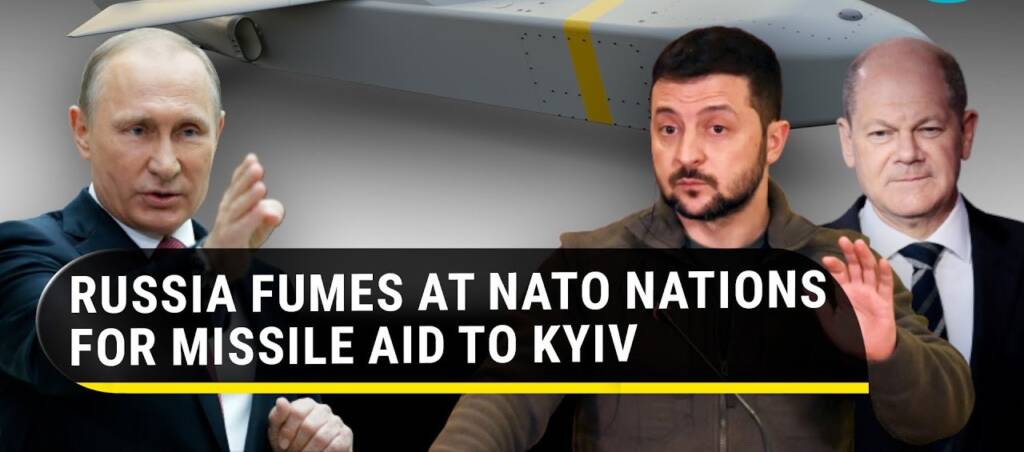Recently, we discussed German Chancellor Olaf Scholz’s decision against supplying Ukraine with Taurus long-range cruise missiles, citing the need for German troop deployment in Ukraine, similar to British operations with Storm Shadow missiles. Scholz’s revelation faced British criticism for allegedly misusing intelligence. Now, further concerning reports have emerged.
Scholz’s confirmation of the involvement of NATO officers and trained personnel in Ukraine has opened a can of worms and now people are wondering aloud about the precise number of NATO country personnel in Ukraine, yet it is certain that their presence is significant, with contributions from the United States, the UK, France, Poland, and other nations.
In his annual State of the Nation address on February 29, Russian President Vladimir Putin issued a stark warning, suggesting that NATO’s deployment of troops to Ukraine could escalate into nuclear conflict. This address, spanning two hours, came in the wake of French President Emmanuel Macron’s remarks about NATO’s potential involvement in Ukraine to prevent a Russian triumph.
Join us on Telegram: https://t.me/tfiglobal
The discussion on NATO’s role in Ukraine is tense, with accusations of NATO not just aiding Ukraine against Russia but also trying to set up military bases near Russia. Reports suggest the US has placed up to 12 CIA bases by the Russian border, seen as aggression by Moscow. Additionally, there are attempts to limit Russia’s military reach and possibly change its regime, with NATO actively involved in this strategy.
Wired Magazine also reported that the US has technology to track the cell phones of Putin’s inner circle, aiming to locate Putin himself. The revelation that the US has developed technology to track the cell phones of Putin’s inner circle primarily suggests an intent that could stretch to assassination strategies. Such actions, alongside efforts to eliminate Russian leaders and military commanders with Ukrainian assistance, unmistakably underscore NATO’s and the US’s focus on regime change in Moscow, beyond merely achieving military victories on the battlefield. This aim was candidly reflected in Victoria Nuland’s recent statement, where she expressed dissatisfaction with the current Russian leadership, indicating a desire for a fundamentally different governance structure in Russia.
Read More: NATO ‘s Covert War in Ukraine Exposed!
Vladimir Putin, a prime target for NATO-linked operatives, has survived assassination attempts, including a drone strike on his Kremlin office and a fatal crash involving his driver in Moscow, highlighting the risks of espionage. Despite these dangers and the lethal nature of Russian politics, Putin has notably not retaliated against NATO or Ukrainian leaders.
Amid these tensions, Western intelligence, think tanks, and Ukrainian sources have painted a grim picture of Ukraine’s situation, suggesting a potential defeat within the next few months. This prospect prompted an urgent response from European leaders, leading to an emergency meeting in Paris orchestrated by French President Emmanuel Macron. At this gathering, European nations discussed ramping up military support for Ukraine, including the provision of long-range weaponry. However, Germany expressed reservations, particularly regarding the supply of Taurus missiles, highlighting the complexities and divisions within the European Union’s approach to supporting Ukraine amidst its ongoing conflict with Russia.
The German government’s hesitance to supply Taurus missiles to Ukraine, possibly due to fear of Russian retaliation or explicit warnings from Russia, highlights a critical juncture in NATO’s policy regarding Ukraine.
The subsequent public acknowledgment by German Chancellor Olaf Scholz regarding the operation of Storm Shadow missiles by British troops in Ukraine has inadvertently removed the veil of secrecy from NATO’s involvement, suggesting a need for an urgent reassessment of NATO’s stance and strategy in the region.
Read More: Putin’s TARGET list is causing PANIC in NATO Camp
The revelation of NATO troops on the ground, despite official policies against such deployments, undermines the alliance’s position of plausible deniability, raising Russian concerns about the military support being provided to Ukraine, including weapons that could target Russian civilian areas.
President Vladimir Putin’s explicit warnings about Russia’s readiness to use nuclear weapons in response to perceived NATO provocations have significantly heightened tensions.
Speculation about NATO’s preparedness for a conflict with Russia suggests a strategic oversight. By moving key defense assets to Ukraine, NATO has compromised its defense against conventional and nuclear threats. Escalating tensions through rhetoric, NATO faces risks from its current strategy.
